Huigendijk
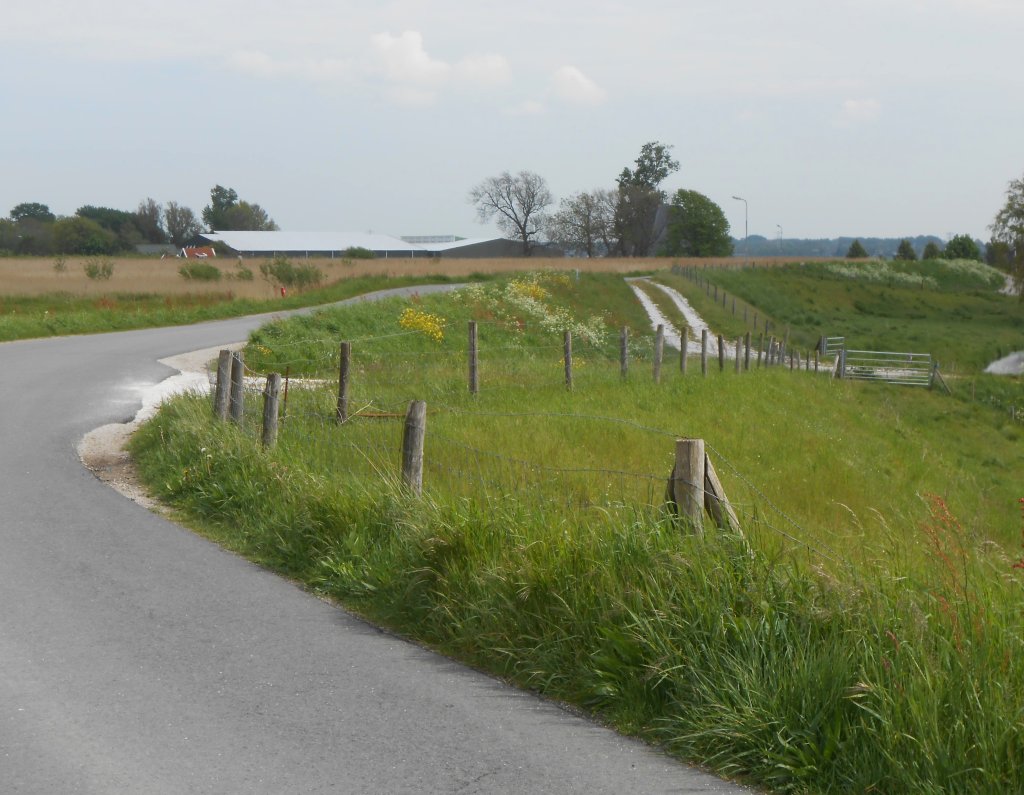
The Huigendijk runs from Alkmaar to Rustenburg. Today it is called Slingerdijk and Noordschermerdijk. It is hard to imagine, but four hundred years ago the old dike lay between two lakes: the Heerhugowaard and the Schermeer.

In 1248 the Omringdijk had broken through in the far north near Schagen. From north to south a lake area was created, which came up to the Huigendijk. This was low and vulnerable at the time. To the south, the Schermeer had already formed. The dike (black line on the Map) was then still protected on both sides by wide strips of land outside the dike (green), but over time these were crumbled or swept away by the waves.
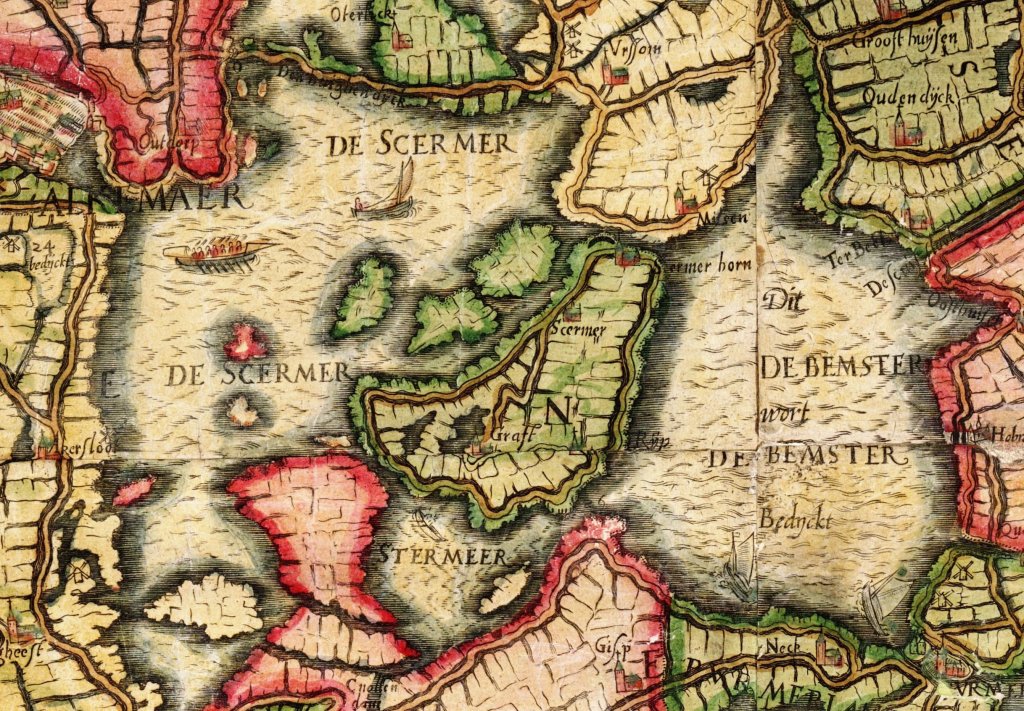
Lakes like the Beemster and the Schermeer had emerged from peat rivers between 1000 and 1200. As farmers dug ditches to drain the peat soil, the land sank by an inch a year. The rivers received more and more water. Due to intrusions from the Zuiderzee, they eventually flooded en masse. Large tracts of land thus became meters under water.
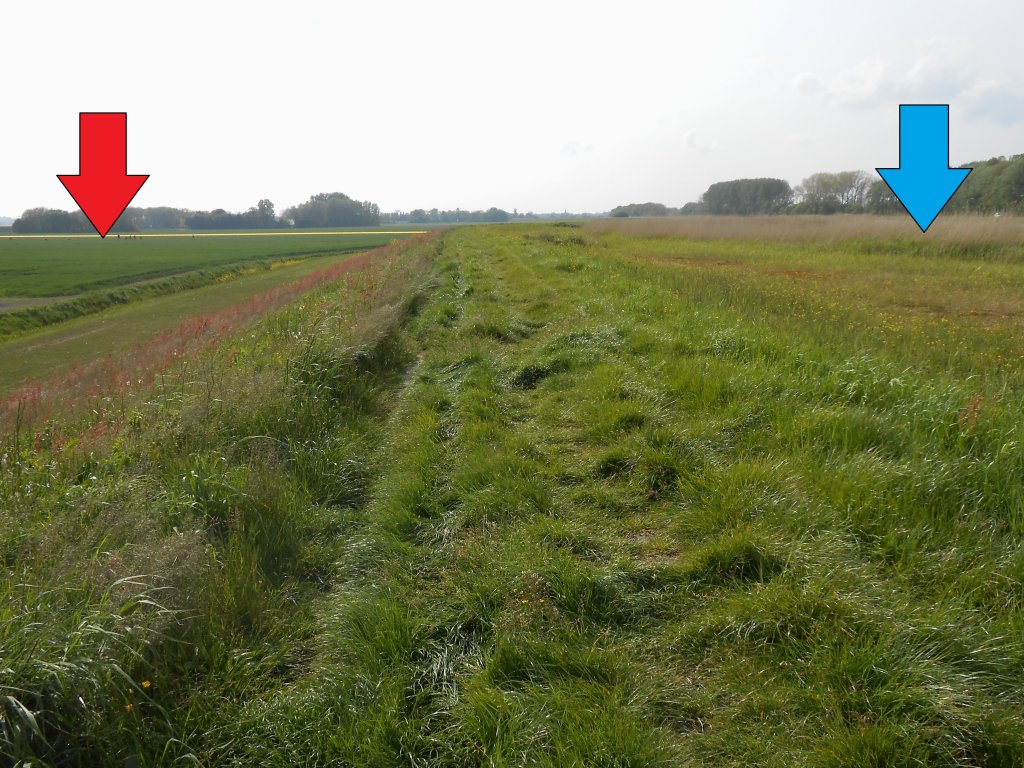
From the mill at Oterleek, the Huigendijk for a distance of one and a half kilometers is only passable on foot. Four hundred years ago, nothing but water could be seen on either side. Imagine the Schermeer on the left (red arrow), the Heerhugowaard lake on the right (blue arrow). Almost nothing remained of the land outside the dike by 1600. Only the dike prevented the lakes from merging.
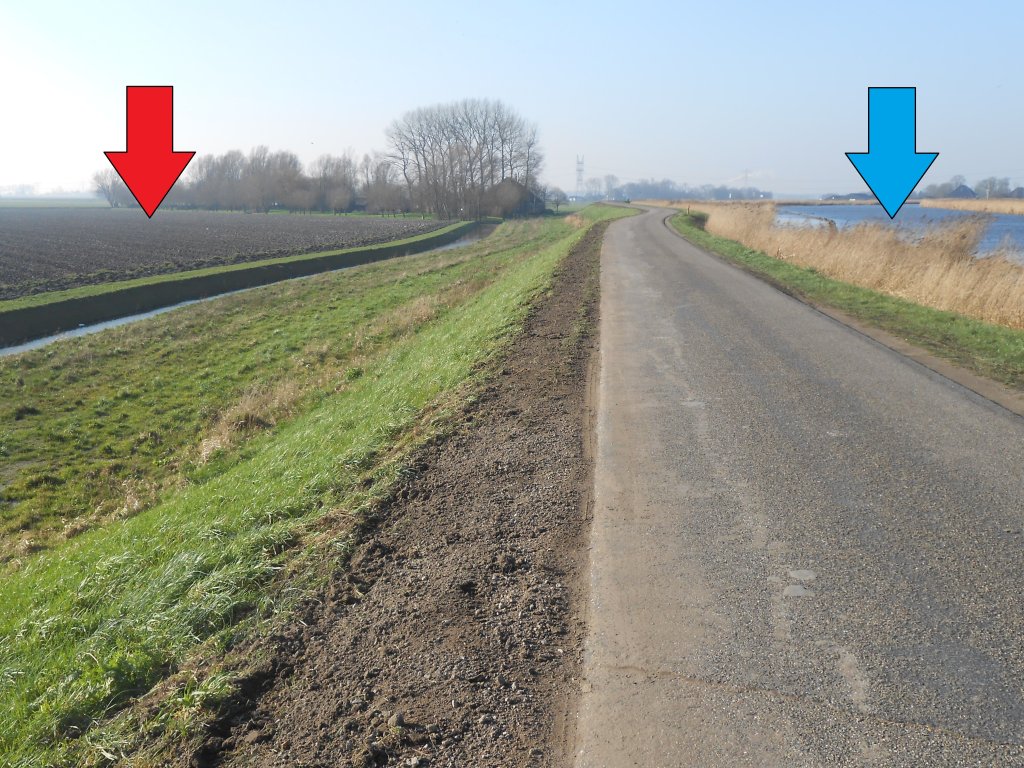
The Schermer and Heerhugowaard were diked and drained between 1629 and 1635. A ring ditch was dug between the two (blue arrow). This served from then on to drain the water, which until then was discharged into the lakes via sluices in the Huigendijk. The Huigendijk was incorporated into the Schermer ring dike (red arrow). It saved a lot of money that this part of the Omringdijk was ready to protect the new polder from the water from the ring ditch.
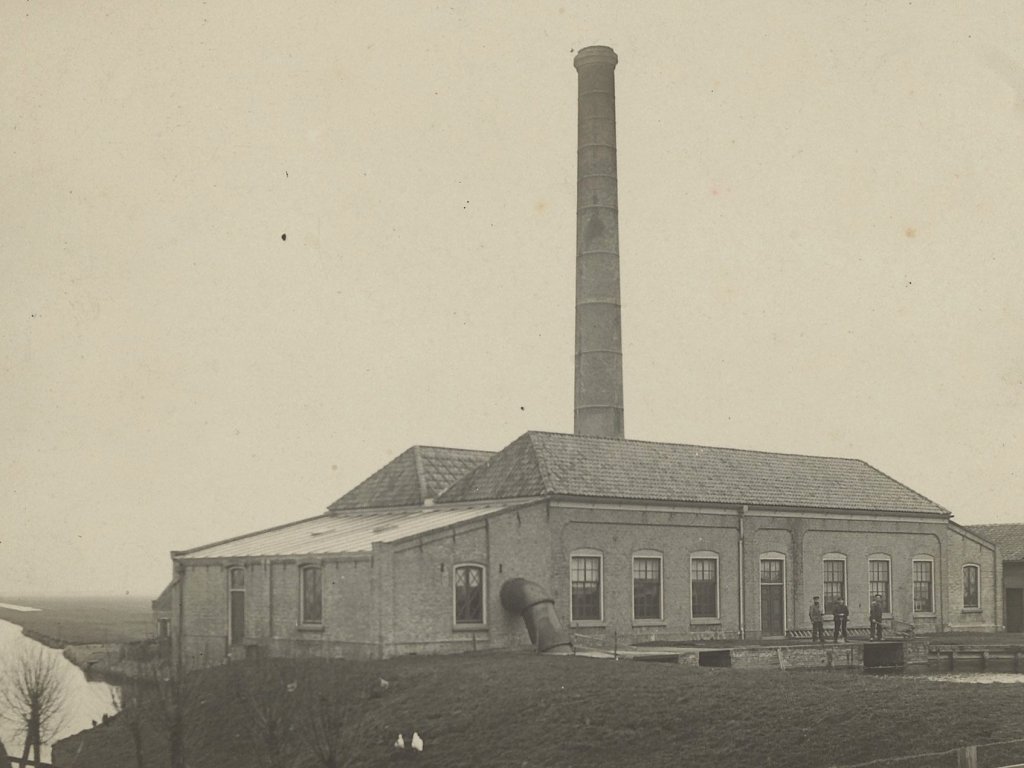
Across the street we see the former Heerhugowaard steam pumping station built in 1877. The reason for its construction was the wet winter of 1874. There was so little wind then that the many mills were unable to pump the water away. The Heerhugowaard faced flooding. The farming population pointed their fingers at the polder administration: never again, time for steam! A pumping station was built, but not all the mills were demolished. Only after technical renovations to the pumping station in the years 1899-1907 were the remaining mills abandoned.
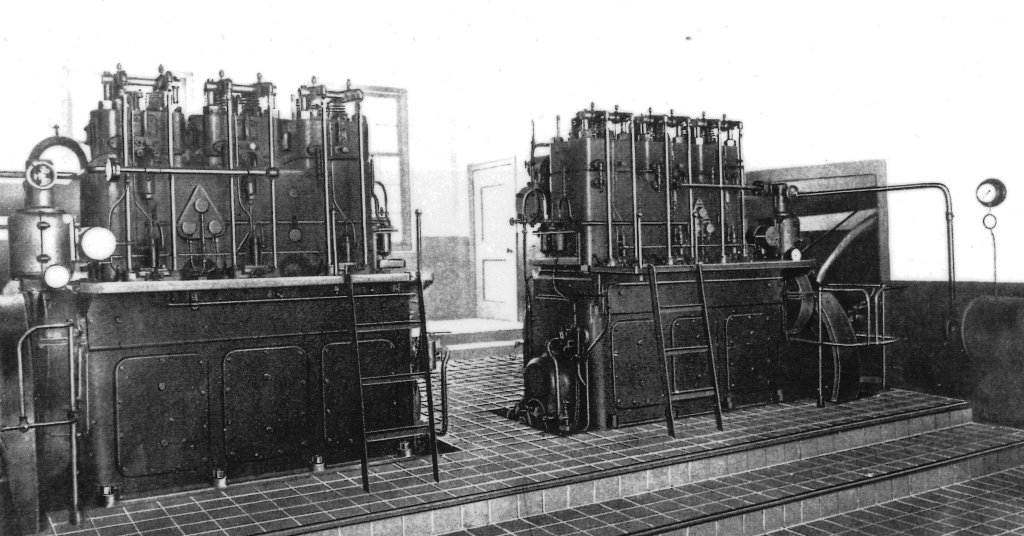
The pumping station served from 1877 to 1994, first on steam, then diesel and later electricity. The diesel engines pictured here were replaced by electric motors during the war because of strict gasoline rationing. In 1994, a new, automatically operated pumping station took over. It stands next to the old building, which today houses the Polder Museum with cafeteria.